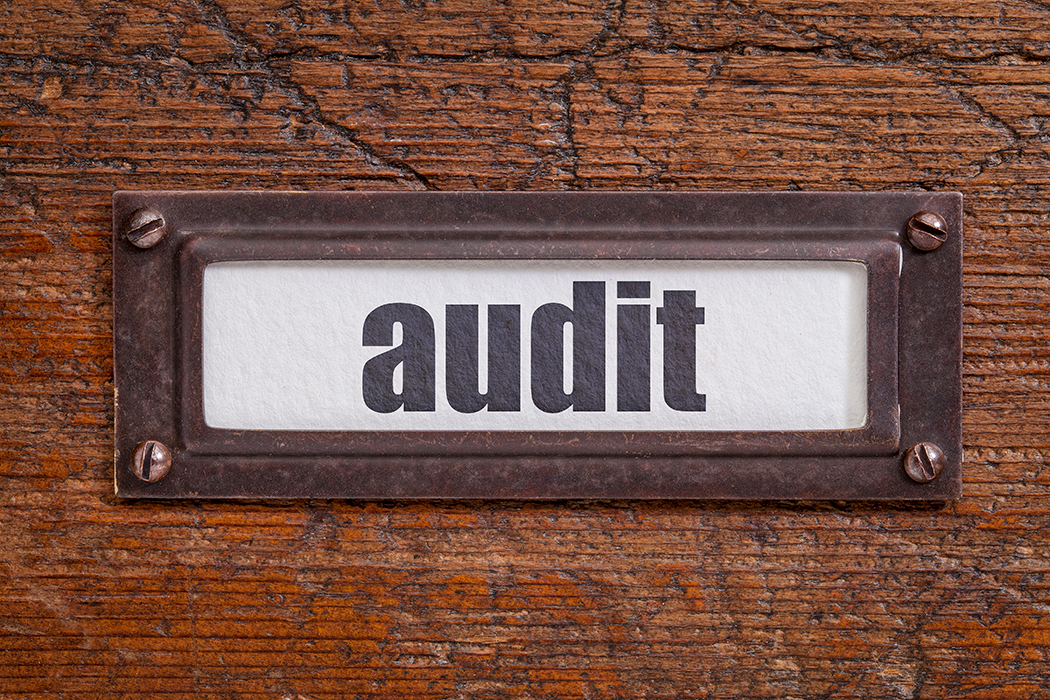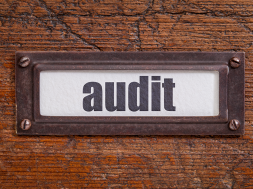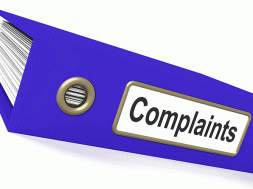
U.S. Department of Education’s September 2016 Audit Guide Key Changes
By Michael T. Wherry, CPA, Director/Shareholder, McClintock & Associates, PC
When the expression “all good things come to those who wait” was first used it probably didn’t have the student financial program regulations in mind. While postsecondary schools and auditors have been waiting for a new audit guide to clarify and define audit scope since 2000, the requirements of the new audit guide provide for a significant amount of new work to be performed. On Sept. 26, 2016, the U.S. Department of Education’s (ED) Office of Inspector General (OIG) issued the long-awaited Guide for Audits of Proprietary Schools and for Compliance Attestation Engagements of Third-Party Servicers Administering Title IV Programs (Guide).
As expected the Guide continues to expand auditor requirements in regard to Institutional Eligibility requirements and the number of student files to be tested.
Over the past decade, ED has been able to leverage technology to improve efficiencies and accuracy of student information in areas such as: replacement of financial aid transcripts with the National Student Loan Database System, IRS Data Retrieval Tool, and verification groups. As a result, these areas are less of an audit risk as the various Title IV systems are capturing more information electronically which eliminates the risk of manual error. As a result, the audit requirements related to the majority of the student eligibility has stayed relatively constant.
The areas in which ED policy has been focused over the past decade is related to Institutional Eligibility and the changes in the Guide represent ED’s focus to have many of the new Institutional Eligibility requirements to be tested by third-party auditors. The changes to the Guide are clearly aligned with ED’s Gainful Employment regulations and Dear Colleague Letter GEN-16-15 which defines the companies/services who meet the definition of a Title IV servicer. The only changes to the financial statement audit relate to the 90/10 calculation.
In our opinion, the changes in the Guide can be grouped into four main categories:
- 90/10 calculation and reporting,
- Student file testing,
- Gainful employment, and
- Administrative capability.
It is interesting to note that ED didn’t eliminate any audit requirements other than changes for processes which have changed since the last audit guide (i.e., financial aid transcript). In addition, ED indicates they recommend that the school engages the same auditor to perform the required financial statements audit in conjunction with the compliance audit. However, ED doesn’t indicate any reason as to why they believe this is beneficial.
The Guide is effective for audit periods beginning after June 30, 2016. Thus, the Guide will be effective for schools with a year-end of June 30, 2017 or later.
Key changes to the Guide are as follows:
90/10 calculation and reporting
The 90/10 rate continues to be a “hot” issue for ED and the Guide increases the focus and visibility of specific components of the calculation.
- The 90/10 calculation presented in the financial statements must be prepared by the school, not the audit firm. If the school is unable to prepare the calculation, the school should engage a person or firm other than the audit firm to prepare the calculation.
- 90/10 calculation must be determined on a student-by-student basis.
- If the auditor determines the school’s 90/10 calculation is misstated by any amount, the auditor must disclose this as a finding in the report on internal control over financial reporting and compliance. The auditor will need to report why the calculation is incorrect and what the auditor’s calculation determines the rate to be.
- The 90/10 footnote disclosure now includes new lines. One in the Title IV section for all refunds due to a student’s withdrawal. The second is in the revenue from other resources section for the sale of receivables less any recourse requirements.
It will behoove management to vet in detail their 90/10 calculation software and processes in advance of the effective date to ensure the rate is 100 percent accurate, the calculation is done on a student-by-student basis, and all required elements for the footnote disclosure are compiled.
Student file testing
In regard to student file testing, the changes in the Guide are focused in three areas: the number of files to be tested, ensuring some minimal samples are tested for specific compliance requirements, and student confirmations.
- While ED has retained the two student universes of 1) enrolled, graduated, and on an approved leave of absence, and 2) withdrew, dropped out, enrolled but never began attendance, or were terminated, new sample size populations exist for the auditor’s student file testing (Sample of Students).
- For a universe of 250 or more, minimum of 60 student files,
- For a universe between 100 and 249, select 25 percent of the universe,
- For a universe between 26 and 99, select 25 student files, or
- For a universe of 25 of less, select all student files.
For a school, which exceeds 250 students in each of the two universes, the sample size will now be 120 student files instead of 75 student files. This equates to a 60 percent increase in file testing. For most schools, this will increase the number of student files to test in the withdrew, dropped out, enrolled but never began attendance, or were terminated universe which may increase the risk of findings as, from our experience, students who drop, re-enroll, and drop again are more likely to have findings.
Even though the Guide has increased the number of student files to test, it also wants to ensure a minimum student sample is tested in these specific areas:
- Test at least five students who were subject to verification procedures.
- Test at least five students who were enrolled in distance education programs, if applicable.
- Auditor is required to test at least five students subject to the NSLDS Transfer Student Monitoring Process.
From our experience, our expectation is that these minimum sample sizes will be covered via an auditor’s normal student file selection process unless the sample size is very small.
The new audit requirement which poses the most uncertainty in regard to potential time and accuracy relates to student confirmation testing.
Our belief is that ED wants confirmations to be performed as a step to ensure fraud isn’t occurring. However, we have concerns as to the timing and the accuracy of the information to be received.
- Auditor is required to send positive written confirmations via mail or email to the Sample of Students selected for student file testing to verify their existence and that they attended the school during the audit period. A response rate of 30 percent must be achieved or additional procedures need to be performed. The Guide provides sample confirmation with the required information and the confirmation requests the student to verify certain information:
- Dates attended,
- Type of Title IV aid received,
- Various questions related to consumer information disclosures to assess whether the required information was provided to the students or a notice as to how it could be obtained (i.e., Security Report, Completion and Graduation Rates).
- The Guide allows for alternative procedures if a 30 percent return rate of the confirmations is not obtained. Alternative procedures include phone calls, review of personal information in the student’s file, and/or review of attendance records. From our review, an auditor can’t default to alternative procedures without attempting the confirmation process.
M&A believes this item will add significant time to the audit and also delay the issuance of the FSA reports due to the required response rate.
An item for consideration is whether the confirmations can be started before the file selections are provided to the school. This would require the school to provide the contact information for all students to the auditor in the planning process so the auditor can begin sending confirmations to students before the compliance fieldwork. However, as noted above, we can’t indicate to the school the student file selections until we begin the fieldwork. M&A does find it unusual that the alternative procedures include information which should already be reviewed as part of the student file testing process.
Gainful Employment
With the addition of the Gainful Employment (GE) regulations since the 2000 audit guide, the inclusion of these regulations in the Guide was expected since many of the GE disclosures or reporting is information which ED is not reviewing. The moratorium of the original GE regulations was one of the reasons we surmised the Guide was not issued earlier. GE audit requirements are as follows:
- GE Reporting
- For award years after 2013/14 for eligible programs listed on the school’s Eligibility and Certification Approval Report (ECAR) and programs added after the last recertification, determine if the school reported the required GE information to ED by Oct. 1. The auditor must design a test to determine the information was complete and accurate.
- Utilizing our Sample of Students, verify the required GE information was reported to ED and was complete and accurate.
- Prospective Student Disclosures – GE Programs
- Ascertain the GE disclosure template for each applicable program contains all required information. Testing must be completed to determine whether the information disclosed is complete and accurate.
- Ascertain the GE disclosure templates are prominently provided in a simple and meaningful manner on the home page of the program website and prominent/direct links on other applicable webpages exist.
- From a sample of programs, ascertain the school correctly calculated the on-time completion rates.
- Student Warnings – GE Program Eligibility
- Auditor needs to ensure any GE warning notice contains all required information.
- The GE disclosure template is updated to include the warning with the required 30-day time frame.
- Select a sample of students who were enrolled in GE programs that should have received the warnings to ensure the school provided timely warnings in the appropriate format and in the 30-day time frame, and perform the same procedures on prospective students. Similar audit steps exist to test the requirements to provide the GE warning to prospective students with the applicable timeframes surrounding enrollment.
ED didn’t provide any commentary as to what is meant by complete and accurate, or guidance on sample size. As is clear from the audit steps, ED wants the entire GE requirements to be subject to audit testing.
Administrative Capability
The final audit area is related to ED’s “catch-all area” otherwise known as Administrative Capability. Audit steps are as follows:
- Determine if a school uses a third-party servicer or financial institution to make direct payments of FSA credit balances to students. If so, obtain the contract to determine compliance with the Tier One or Tier Two cash management requirements have been met.
- Obtain and review the school’s written procedures or written information regarding approval, disbursement and delivery of Title IV funds, and the preparation and submission of reports to ED. Compare this information to how activities are actually performed based upon the audit work conducted. Report any differences noted.
- Review a school’s Direct Loan quality assurance program, if applicable.
- Annual security and fire safety reports – On a test basis, the auditor needs to trace and verify the compilation of crime statistics and fire safety information to source documents.
- Job placement rates – This represents a new audit requirement. If the school, advertises job placement rates the auditor is required to test this information. This includes:
- Review the advertised job placement rates and, on a test basis, trace and verify the information to source documents,
- Ascertain method used to inform prospective students prior to enrollment of the information required to be disclosed when job placement rates are advertised, and
- Review state licensing requirements for any job in which the school has advertised placement rates and determine if school has accurately disclosed State licensing requirements.
This section poses some questions and concerns as an auditor.
For example, auditors who are trained as accountants or financial aid professionals will now be required to review crime information source documents to determine if the annual security report is correct.
In addition, auditors will need to review the financial aid internal control processes and procedures and determine if variance exist compared to actual procedures. This could result in a finding even when all of the Title IV aid was processed and disbursed correctly. These two items, specifically, we find to be ambiguous and will only serve to create disparities in the quality of audit reports being submitted to ED.
Compliance audit report
ED did a couple of changes in regard to the audit report to be issued and overall we believe these changes will have only a limited effect on the timing and amount of audit work to be performed.
- Management will need to provide their responses in the audit report in a section called “Reporting Views of Responsible Officials” which will be located after the auditor’s recommendations. (M&A anticipates this may be a very small section in which management indicates if they concur with the finding or not. Note this does not replace the need for management to prepare a Corrective Action Plan).
- Auditor is required to note in the recommendation section of the finding (1) if an appropriate refund or adjustment should be made or (2) that the school should confer with ED officials as to the final resolution of the refunds or adjustments.
- Consistent with the 2000 Audit Guide, the auditor is required to assess the resolution of prior audit findings. However, if revised processes or controls were established to address a prior finding, the auditor may need to observe or test the transaction that occurred in the current audit/attestation period to clear the resolution of any prior audit findings.
Summary
As indicated earlier, the Guide continues the trend of increased scrutiny and oversight of postsecondary schools. Due to the additional work to be performed and the uncertainty in regard to timing surrounding audit steps such as the student confirmations, schools should review this Guide with their auditors in advance of the effective date to understand the additional information which will need to be provided and the additional time the audit is expected to take. This will be critical for schools to understand any fee increase, the effect upon the timing of the compliance audit fieldwork, and the compliance report issuance date. Some of the increase in time can be estimated with reasonable certainty and other areas will have less certainty. For example, schools and auditors can apply the new student file sample size to the most recent Title IV student population to determine an estimated number of files to be tested under the new Guide. However, areas such as GE reporting and student confirmations will be more difficult to project the additional audit hours which are expected to be incurred.
Schools should be having discussions with their auditors in advance of the effective date to plan for these changes and to update/adopt new policies and procedures to avoid findings. Schools also need to be evaluating their auditor to ensure they are fully aware of the new requirements as a deficient audit report poses a risk for a school’s Title IV eligibility/financial responsibility. Prudent planning in advance of the effective date minimizes the chance of significant risks or consequences to the school.
MICHAEL WHERRY is a Certified Public Accountant who has 25 years of experience providing a full range of client service and consulting services in the public sector to postsecondary schools which include financial statement audits, Title IV compliance audits, agreed-upon- procedure attestation engagements for regulatory requirements, 90/10 calculation reviews, composite score projections and planning, financial statement reporting consulting and understanding of new accounting requirements, transaction services for buyer/sellers, internal control processes and procedures, and coordination with Tax Department on tax savings and opportunities. He has presented at regional and national sector conferences in regard to regulatory and audit issues affecting post-secondary institutions.
Prior to joining McClintock & Associates in 1991, Mr. Wherry worked for Deloitte. In addition to his professional responsibilities, Mr. Wherry is the treasurer of the East Liberty Family Health Care Center in the city of Pittsburgh and has earned the honor of Eagle Scout. He resides in Pittsburgh, PA with his wife and two sons.
Contact Information: Michael T. Wherry, CPA // Director/Shareholder // McClintock & Associates, P.C. // 412-257-5980 // mwherry@mcclintockcpa.com // https://www.linkedin.com/in/mike-wherry-a542259












Comment(1)